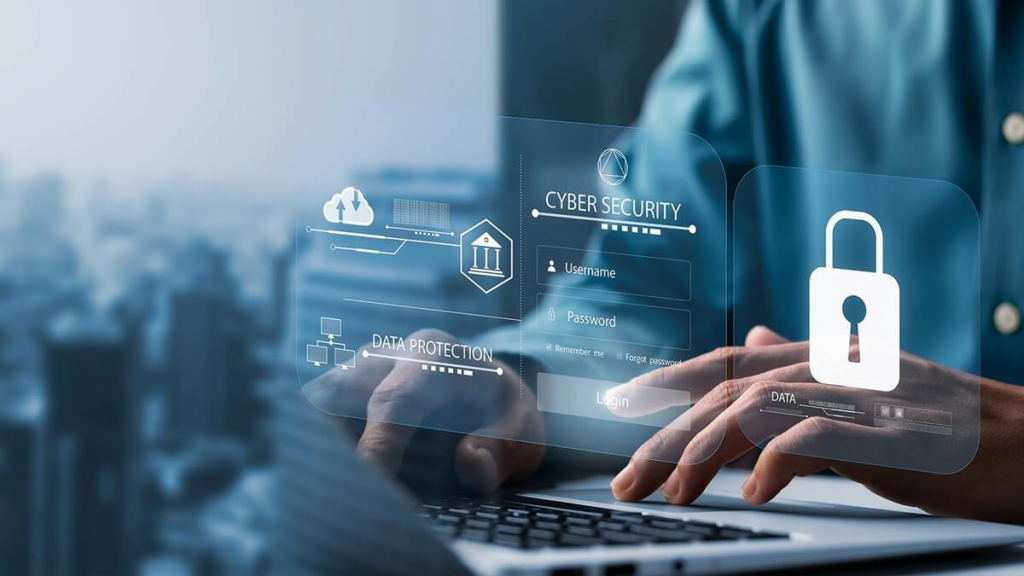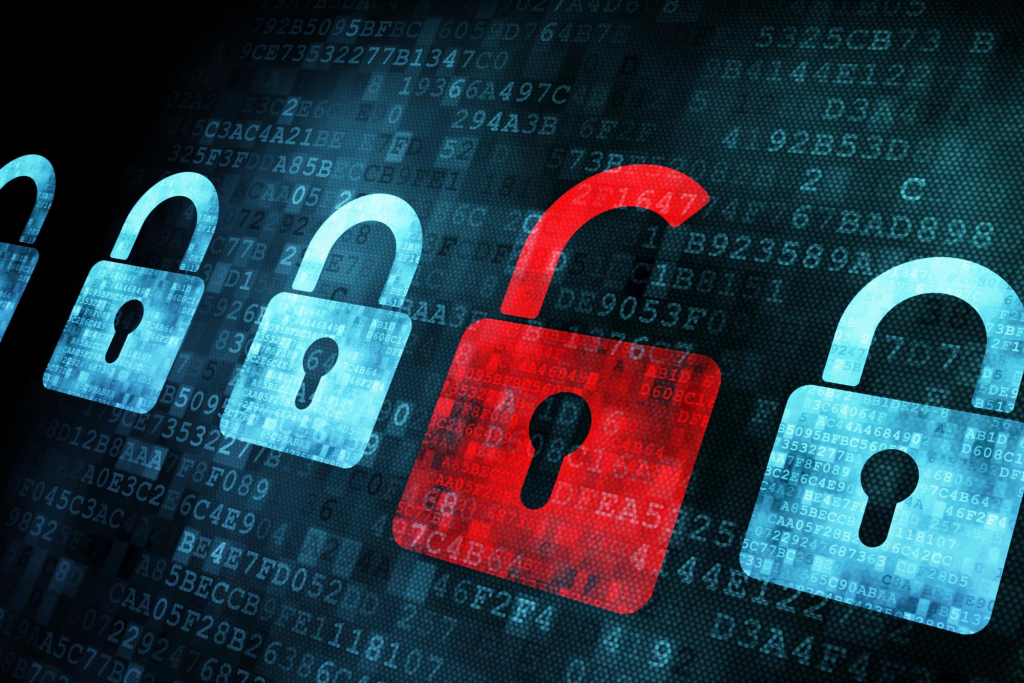As digital investing continues to grow, more people are turning to apps, online platforms, and digital wallets to manage and grow their wealth. While these tools offer convenience and accessibility, they also introduce new risks especially in terms of cybersecurity. Hackers, scams, and data breaches are increasing in frequency and sophistication, making it crucial for investors to understand how to protect their assets.
This article explores the most common digital investment security risks and provides practical strategies to safeguard your money in the digital age.
Understanding the Digital Threat Landscape
Digital investments include trading stocks, cryptocurrencies, and ETFs through online platforms or apps. These platforms store sensitive information such as personal details, financial data, and even access to funds. That makes them attractive targets for cybercriminals.
Some of the most common threats include:
- Phishing Attacks
Fake emails or messages that appear to come from legitimate investment platforms, asking you to click a link or enter login details. These are designed to steal your credentials. - Account Takeovers
If hackers gain access to your login credentials (often through weak or reused passwords), they can access your investment account and withdraw funds or make unauthorized trades. - Malware and Spyware
Malicious software can infect your devices, allowing criminals to monitor your activity, record keystrokes, or steal data. - SIM Swapping
This is a common tactic used to hijack two-factor authentication (2FA) by convincing your phone carrier to switch your number to a new SIM card. Once done, they can intercept security codes and take over accounts. - Exchanges or Platform Breaches
Even secure platforms can be hacked. Cryptocurrency exchanges, for example, have been frequent targets, resulting in millions of dollars in losses.

How to Protect Your Digital Investments
Cybersecurity might seem overwhelming, but implementing just a few key strategies can greatly reduce your risk. Here’s how to stay safe:
1. Use Strong, Unique Passwords
Avoid using the same password for multiple sites. Instead, create strong passwords that are long, include a mix of characters, and don’t use personal information. Consider using a password manager to generate and store passwords securely.
2. Enable Two-Factor Authentication (2FA)
Two-factor authentication adds an extra layer of security to your account. Even if someone gets your password, they’ll need a second code (usually sent via SMS or app) to log in. For added security, use an authenticator app (like Google Authenticator or Authy) instead of SMS-based codes.
3. Beware of Phishing Attempts
Always double-check the source of emails, messages, or phone calls that claim to be from your investment platform. Never click suspicious links or download unknown attachments. A real financial institution will never ask for your full password or PIN via email or text.
4. Monitor Your Accounts Regularly
Make a habit of checking your account activity often. If you notice unfamiliar logins, withdrawals, or trades, contact the platform immediately. Most platforms allow you to set alerts for transactions or login attempts.
5. Avoid Public Wi-Fi for Transactions
Avoid logging into investment accounts on public Wi-Fi networks (e.g., coffee shops, airports). These networks are often insecure and can be exploited by hackers. If you must use public Wi-Fi, use a Virtual Private Network (VPN) to encrypt your data.
6. Secure Your Devices
Ensure your phone, laptop, and tablet are protected with strong passwords or biometric locks. Keep your operating systems, browsers, and apps updated to the latest versions to patch security vulnerabilities.
7. Choose Trusted Platforms
Use investment platforms that are regulated, have good reputations, and offer solid security features such as encryption, biometric logins, fraud detection, and insurance. Always research a platform before transferring any funds.
8. Protect Your Crypto Assets
If you’re investing in cryptocurrencies, consider storing your assets in a hardware wallet (cold storage) rather than leaving them on an exchange. Hardware wallets are not connected to the internet and are significantly harder to hack.
9. Be Cautious With Screenshots and Sharing
Avoid posting screenshots of your portfolio or sharing your trading success online. This can attract scammers or hackers. Keep your investment activity private and secure.

10. Understand Platform Insurance Limits
Not all platforms offer insurance on your investments. Traditional brokerages might be covered by SIPC insurance, while many crypto exchanges offer no guarantees if hacked. Know the level of protection provided by your chosen platform.
What to Do if Your Account Is Compromised
If you suspect your investment account has been hacked or compromised:
- Change your password immediately
- Enable or reset two-factor authentication
- Contact the platform’s support team
- Report any unauthorized transactions
- Check your connected email and phone for suspicious activity
Acting quickly can minimize the damage and prevent further losses.
The Future of Digital Investment Security
As fintech and digital investments continue to evolve, so will the methods used by cybercriminals. Companies are now investing heavily in AI-powered fraud detection, biometric authentication, and blockchain security protocols to stay ahead of threats.
Still, you are the first line of defense. No matter how advanced the security system is, a careless user can be the weakest link.
Real-World Case Studies of Digital Investment Security Breaches
Understanding how breaches happen in real life can help investors recognize patterns and avoid common mistakes.
1. Mt. Gox Bitcoin Exchange Hack (2014)
Mt. Gox, once the largest Bitcoin exchange in the world, lost 850,000 BTC (worth about $450 million at the time) to hackers. The breach was the result of poor security practices, lack of proper audits, and weak internal controls. Investors who left their crypto on the exchange lost access permanently.
Lesson: Never store large amounts of cryptocurrency on exchanges; use cold storage wallets.
2. Robinhood Data Breach (2021)
A social engineering attack targeted Robinhood’s customer support, leading to the exposure of millions of customer emails and names. While no money was directly stolen, the data could be used for phishing scams targeting users.
Lesson: Even regulated platforms are vulnerable. Protect your personal data and be skeptical of any unexpected communications.
3. Binance Hack (2019)
Hackers stole over $40 million in Bitcoin from Binance by exploiting API keys, 2FA codes, and phishing techniques. Binance covered user losses through its Secure Asset Fund for Users (SAFU).
Lesson: Enable security features like withdrawal whitelists and regularly monitor account access logs.
4. Ledger Hardware Wallet Data Leak (2020)
Ledger, a hardware wallet manufacturer, suffered a breach exposing customer contact details, which led to phishing and extortion attempts. Funds remained safe, but the incident highlighted that even hardware wallet owners must guard their personal information.
Lesson: Keep purchase history private and avoid sharing wallet-related details publicly.
Recommended Tools for Protecting Digital Investments
Having the right tools in your security toolkit can drastically reduce the risk of a breach.
Password Managers
- 1Password, Bitwarden, LastPass (business-grade encryption for storing unique passwords)
Benefit: Generate and store complex, unique passwords for every platform without needing to memorize them.
Two-Factor Authentication Apps
- Authy, Google Authenticator, Microsoft Authenticator
Benefit: More secure than SMS-based codes, protecting against SIM swapping.

Virtual Private Networks (VPNs)
- NordVPN, ProtonVPN, ExpressVPN
Benefit: Encrypts your internet traffic, making it harder for hackers to intercept sensitive data on public Wi-Fi.
Cold Storage Hardware Wallets (for crypto investors)
- Ledger Nano X, Trezor Model T
Benefit: Keeps cryptocurrency keys offline, away from hackers and malware.
Anti-Malware & Device Protection
- Malwarebytes, Bitdefender, Kaspersky
Benefit: Detects and removes malicious software before it can steal credentials or monitor keystrokes.
Account Monitoring & Alerts
- Built-in alerts from your brokerage or apps like Mint or Personal Capital
Benefit: Instant notifications for logins, withdrawals, or suspicious activity.
Conclusion
Digital investing offers incredible opportunities but also unique risks. By being proactive about your cybersecurity practices, you can protect your money, your personal information, and your peace of mind.
Remember: strong passwords, two-factor authentication, secure platforms, and a healthy dose of skepticism are your best tools in the fight against digital threats. Start practicing them today, and invest with confidence.
